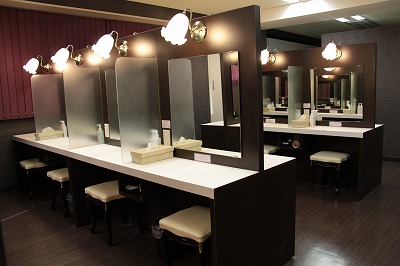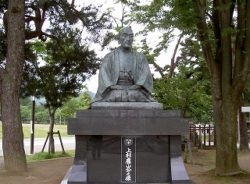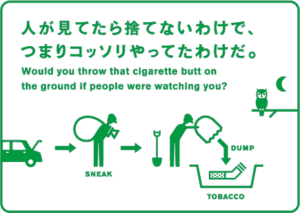A Revolutionary in the Intercity Bus Industry: Japan’s Express Bus Industry
CONTENTS
At the lounge one might find powder rooms, dressing rooms, resting rooms and even shower rooms. Internet connections are free, as are various drinks including nourishing miso (soy bean paste) soup. You can check in your luggage and sleep or watch your favorite movies…What is this business? A hotel? An airline? Indeed, its president has been working to bring the services his company offers up to those standards. It all stems from his wish “to make customers happy.”

“I want to make customers happy.”
“I wanted to be told, ‘Thank you.’ Many passengers express their appreciation when they get off a bus. Besides, I like big vehicles. So why not?” says Kimi Takura, president of the fast-growing bus company, Heisei Enterprise, to explain the reason why he entered the bus business. Before that he drove a delivery van for Sagawa Express, a major transport company in Japan.

“I felt glad to be told ‘Thanks!’ when I delivered a parcel,” he recalls. “They were even more gratified when I arrived before the promised delivery time. It’s very simple, but I want to make customers happy.”
While working as a driver, Takura also sold second-hand imported cars to his coworkers or friends as a sideline. But after two and half years, he was hospitalized for about a month. “My boss came to the hospital and asked me to quit the job if I would be absent from work for a month. So I resigned and he even cut off my health insurance! My father became furious about that.” After Takura quit, he could still continue to sell imported cars and was appreciated a lot by his customers. But this business soon came to an end too.
“One day I received a complaint that I’d sold a repaired car, which is common in the case of second-hand models. I thought I had sold a good car and taken a reasonable commission, but the buyer was unhappy and he complained anyway. So I said, ‘That’s it.’ I decided to quit.”
Takura’s life then took a new course, encouraged by advice from his father: He bought a second-hand bus.
Starting from a Second-hand Unlicensed Bus

Purchasing a second-hand bus was easy, but using it in business was another thing. “The number of commercial vehicles in each district is strictly regulated. I had to start with a so-called shiro-bus, (unlicensed commercial bus),” said Takura. So he first carried inbound tourists from Taiwan or Hong Kong, and took them to tourist spots. These were foreign visitors who, during the “bubble economy” in the late 1980s, were shunned by major tourist agencies or commercial bus companies, which were too busy serving their Japanese customers.
Takura obtained orders directly from Taiwan or Hong Kong and even worked as a middleman to subcontract as many as 40 shiro-buses at the peak of demand. But after the economic bubble burst around 1991, he was able to conclude contracts with Japanese tourist agencies and in 1992 finally set up his own company with five buses. He has since gradually expanded the business.
Getting into the Commuter Bus Business

Getting a contract for commuter or city bus services with municipal or prefectural government was no easy task. With practically no past record of having done business, it was almost impossible to compete with existing contractors. But in 1996, through a Saitama prefectural handicapped facility and in 2000 with the Yoshikawa City municipal government, the company made at long last concluded contracts.
“Once the gate was open and we established a business record, we could readily expand the business,” said Takura. Now the company owns about 180 buses for city bus services alone. But it operates another 100 buses for what we will talk about next: long-distance intercity bus services.
Intercity Bus as Business Center Pillar
The May issue of Japan Close-Up carried an article on the boom of LCCs, which was ignited in 2010 when Japan concluded an “Open Skies” Agreement with the United States. But long before, Japan’s bus industry had already been deregulated. According to data from the Ministry of Land, Infrastructure, Transport and Tourism, the number of passengers traveling aboard intercity buses between such major cities Tokyo and Osaka rose from about 210,000 in 2005 to about 6 million in 2010.
“We started our intercity bus, named VIP Liner, business in 2007,” Takura related. “We were late comers. But it has grown as the center pillar of our business and now accounts for more than half of our revenues.”
At the time Takura’s company entered the bus market, demand was increasing, especially among young people, because of its affordability in price. For example, it costs around just 4,000 yen to travel from Tokyo to Osaka (a distance of about 550km), as opposed to 13,000 yen by Shinkansen express train.
But the quality of service of those intercity buses was not particularly appealing before.
“I couldn’t sleep,” and “I felt cramped,” were the two most common complaints by passengers. Usually an overnight bus trip between Tokyo and Osaka, for example, takes around eight hours.
Takura complained, “Trading off quality for price and the notion of ‘you-get-what-you-pay-for’ is disrespectful to customers. We strived to provide good service at a reasonable price.”
Here again, Takura’s wish to make customers happy is manifested. He invested enough funds on buses, but tried to cut other costs as much as possible. He didn’t spend much on advertising or print up pamphlets, instead using the Internet and other media. But his intentions at first came to naught.
“We purchased a three-seat configuration bus equipped with a toilet,” Takura related. “The interior was also much better than an ordinary bus. But it turned out to be a total failure. The customers’ feedback was harsh. ‘The buses are new, but I still can’t sleep,’ they would complain. I was so distressed.”
“You can make a mistake but do it quickly.”
First off, for a better night’s sleep, he hung heavy curtains over the windows to shut out exterior light. He put up curtains between seats for privacy and replaced the seat cushions with a cozier variety. (Ordinary bus cushions for daytime use are too firm.) He also developed a unique system of simultaneous seat reclining.
“The most common complaint heard is about reclining,” said Takura, “People are concerned about the passenger sitting behind them, so they are reluctant to make their seat recline all the way. So around the midnight, we announce to the passengers, ‘Please recline your seat all the way down.’ Now we have almost no complaints about sleeplessness,” he smiled.
After receiving many customers’ opinions, Takura installed powder rooms and dressing rooms for both males and females, resting rooms and even shower rooms at the bus waiting lounge. The lounge has a cloakroom, electric massage chairs, a free drink dispenser, tooth brushes, free Internet access, cell phone recharging connectors and a kiosk selling various items. Aboard the bus, depending on the model and configuration, it is also possible to recharge one’s cell phone, recline by up to 145 degrees, view movies and access the Internet. Slippers, eye masks and blankets are available. Some scheduled bus runs restricting their passengers to women only.
“You can make a mistake but do it quickly.” Asked if there is any maxim he favors, Takura gave the above. He has tried to live according to this motto and makes efforts to meet the demand of customers swiftly and to the greatest degree possible. Now it seems difficult to find even a small demand that still needs to be met.
Business Hotel and Airplanes As a Showpiece

Takura explained his concept of customer service: “Conventional bus companies take care of passengers only while they are on the bus --- but don’t care about them beforehand or afterwards. But we do care. We emulate the service of business hotels and airplanes. We researched airline lounges at the airports, airplane seats and its amenities, and mimic the services of business hotels. Once you get off the airplane, the service is over. But even after customers get off the bus, we take care of them with such perks as free usage of our lounges, cloakroom service and so on.”
Passengers arrive early in the morning, so they can relax at the lounge, eat breakfast or go to a nearby public bath to freshen up. “Overnight buses or long-distance buses used to have a negative image. People felt guilty when asking their parents to ride an overnight bus to come visit them, for example. But now there are no such feelings. In fact, our customer base includes growing numbers of seniors,” said Takura.
It was probably those regular customers in their 20s or 30s who recommended the bus their parents. So it’s no wonder the company boasts many repeat customers; some even use it more than 100 times a year.
According to company data, 65% of the customers are female and about 380,000 people will have utilized the company’s intercity bus service this year. The figure continues to grow fast.
“I wanted to try various buses, but once I used the VIP liner, I stopped my search. This is it,” said a 29-year-old house wife living near Osaka Prefecture who sometimes goes back to Tokyo to see her family. A British man in his 30s gave us his impressions: “Reclining simultaneously is a very good idea. Other friends of mine also think the same way.” He and his friends had been vacationing in Kyoto this summer.
Revolutionary Still Has Discontent

“They told us happily that they landed a job after using our bus,” said Takura who is content to hear comments from university student job-seekers, “They came from Osaka to Tokyo for a job hunt using an overnight bus to save money, but failed many recruitment interviews, partly due to the sleepless and stressful bus trip. But they could sleep well aboard our bus and use our lounge to write their CVs and check in their luggage with us when they went to visit a prospective employer. It’s very tough to go back and forth to Tokyo while lugging a heavy suitcase from home. So I hoped we could do something to help them,” Takura remarked.
Some universities in the Osaka region now officially recommend Heisei Enterprise, Takura’s bus company to its job-hunting students.
The 47-year-old president was referred to as kakumeiji, revolutionary in a book published in late 2010, “Bus kaisha shacho no datsu-joshiki ron (A bus company president’s theory of departure from common sense).” But the revolutionary has his own points of discontent. “I began running noodle shops because I wanted to be able to communicate with customers. Since I became a company president, I rarely have contact with ordinary passengers any more, but meet mostly with other companies’ presidents. I started this bus business in the first place to be in touch with customers as a bus driver,” Takura recalled.
At its peak, he operated five noodle shops but he recently shut them down because they were unprofitable. “I want to nurture my successors, so I can leave all the company management to them,” said Takura, who hopes someday to return to the front lines and work first-hand, at making his customers happy.


